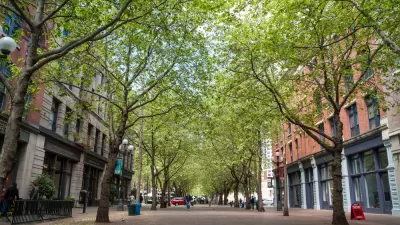ScienceDaily reports on a new study by researchers from Princeton University and the Massachusetts Institute of Technology which shows that what used to be considered a 'Storm of the Century' may soon become a 'Storm of the Decade.'
The report published in the journal Nature Climate Change predicts that due to the Earth's climate changes, "regions such as the New York City metropolitan area that currently experience a disastrous flood every century could instead become submerged every one or two decades." The study noted that increases in storm intensity were accompanied by increases in frequency, a double dose of bad news for coastal communities.
The research, which used New York City as a test case to model several storm scenarios, is said to be the first study to, "examine the future intensity of storm surges, [and] also to offer a tool for estimating an area's vulnerability," said co-author Michael Oppenheimer, the Albert G. Milbank Professor of Geosciences and International Affairs at Princeton.
"The physical damage and economic loss that result from storm surge can be devastating to individuals, businesses, infrastructure and communities. For current coastal community planning and design projects, it is essential that the effects of climate change be included in storm-surge predictions," noted Carol Friedland, an assistant professor of construction management and industrial engineering at Louisiana State University.
FULL STORY: 'Storm of the Century' May Become 'Storm of the Decade'

Study: Maui’s Plan to Convert Vacation Rentals to Long-Term Housing Could Cause Nearly $1 Billion Economic Loss
The plan would reduce visitor accommodation by 25,% resulting in 1,900 jobs lost.

North Texas Transit Leaders Tout Benefits of TOD for Growing Region
At a summit focused on transit-oriented development, policymakers discussed how North Texas’ expanded light rail system can serve as a tool for economic growth.

Why Should We Subsidize Public Transportation?
Many public transit agencies face financial stress due to rising costs, declining fare revenue, and declining subsidies. Transit advocates must provide a strong business case for increasing public transit funding.

How to Make US Trains Faster
Changes to boarding platforms and a switch to electric trains could improve U.S. passenger rail service without the added cost of high-speed rail.

Columbia’s Revitalized ‘Loop’ Is a Hub for Local Entrepreneurs
A focus on small businesses is helping a commercial corridor in Columbia, Missouri thrive.

Invasive Insect Threatens Minnesota’s Ash Forests
The Emerald Ash Borer is a rapidly spreading invasive pest threatening Minnesota’s ash trees, and homeowners are encouraged to plant diverse replacement species, avoid moving ash firewood, and monitor for signs of infestation.
Urban Design for Planners 1: Software Tools
This six-course series explores essential urban design concepts using open source software and equips planners with the tools they need to participate fully in the urban design process.
Planning for Universal Design
Learn the tools for implementing Universal Design in planning regulations.
City of Santa Clarita
Ascent Environmental
Institute for Housing and Urban Development Studies (IHS)
City of Grandview
Harvard GSD Executive Education
Toledo-Lucas County Plan Commissions
Salt Lake City
NYU Wagner Graduate School of Public Service





























